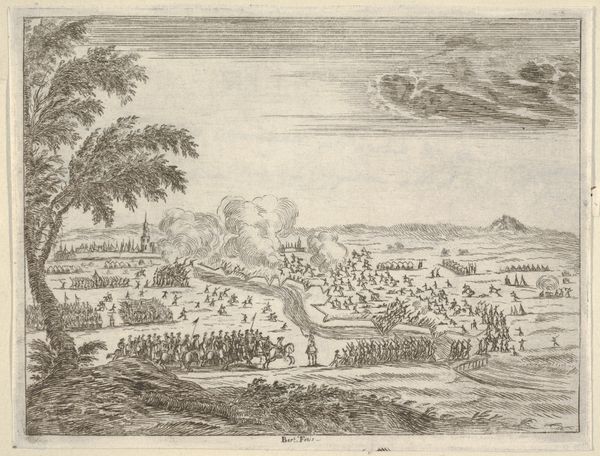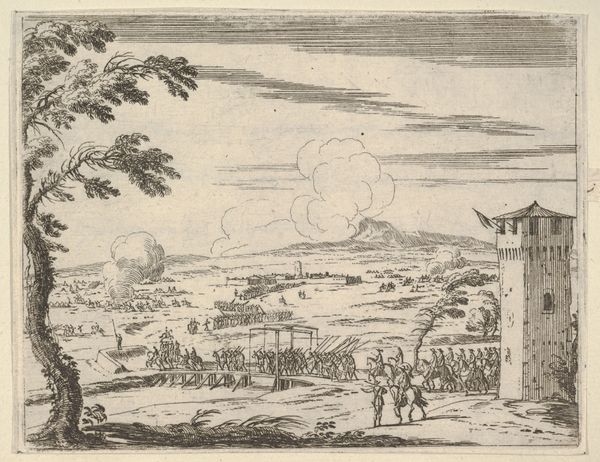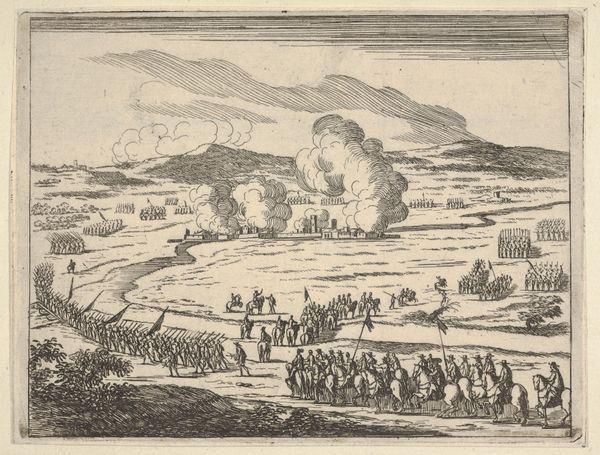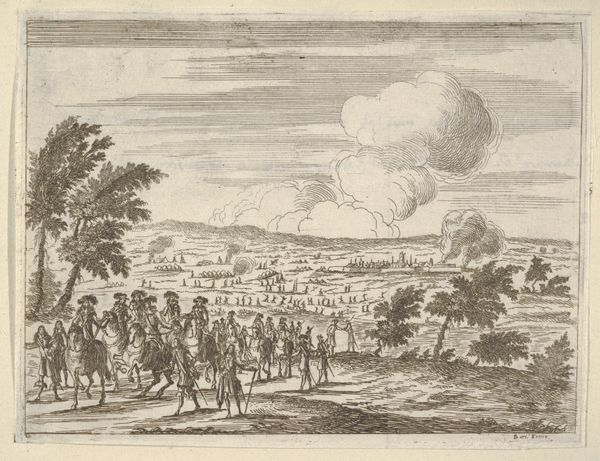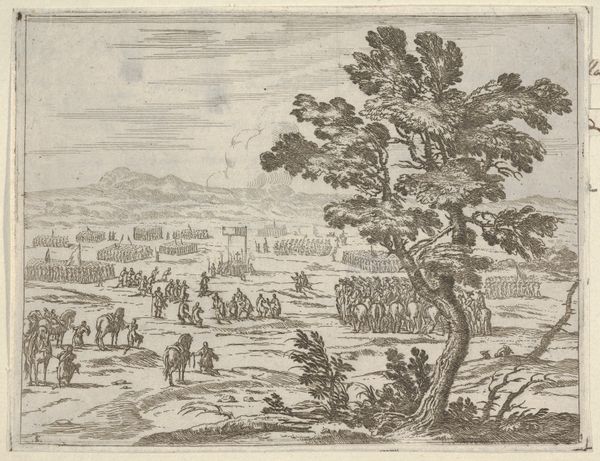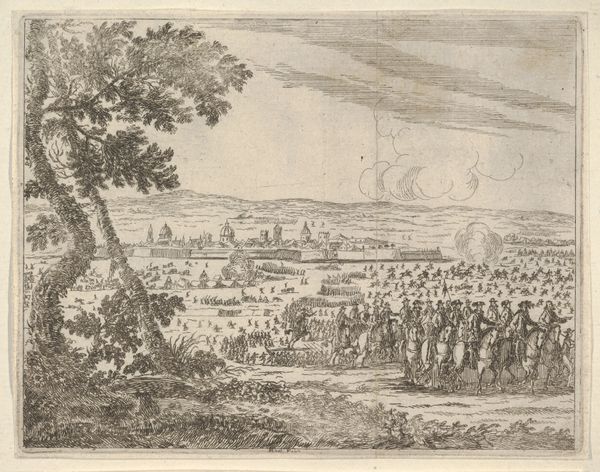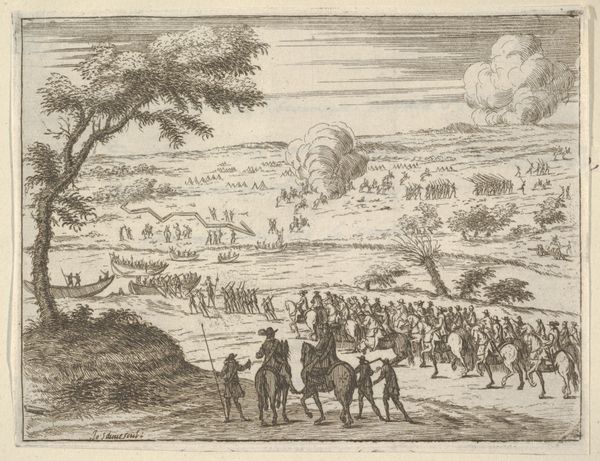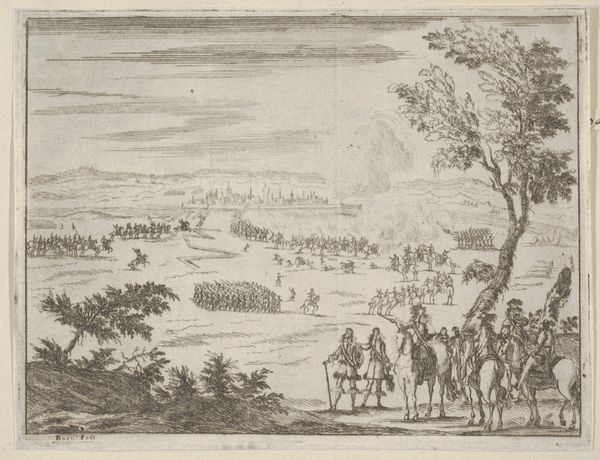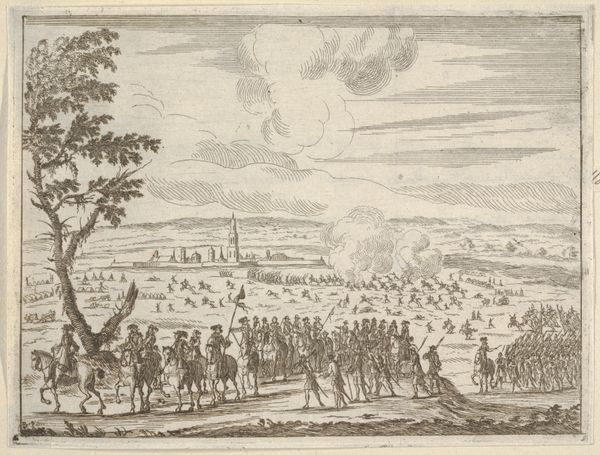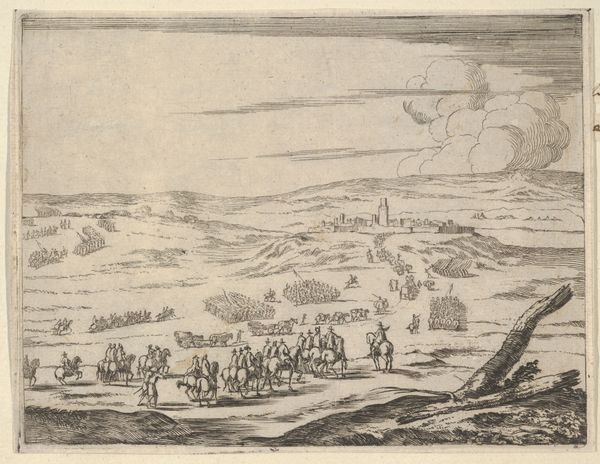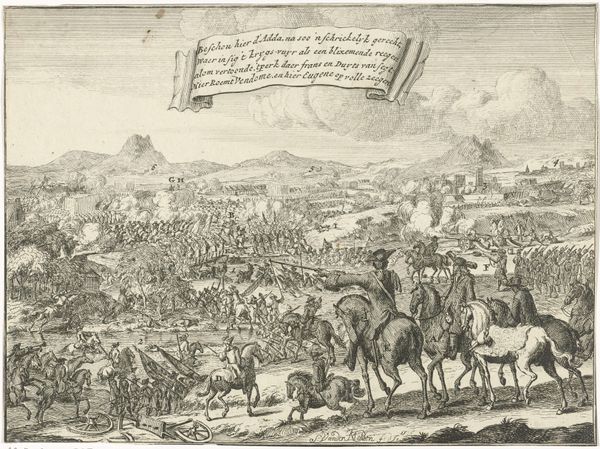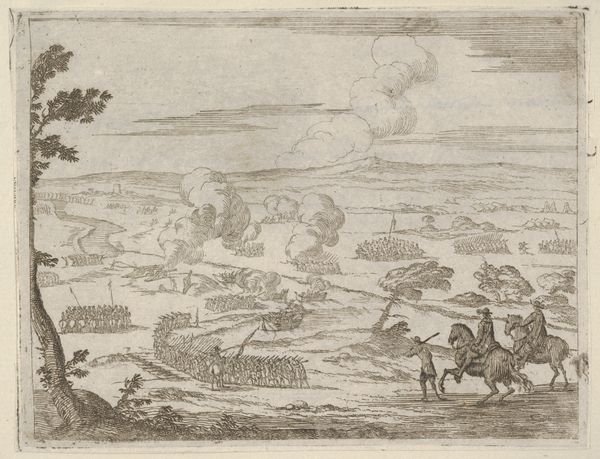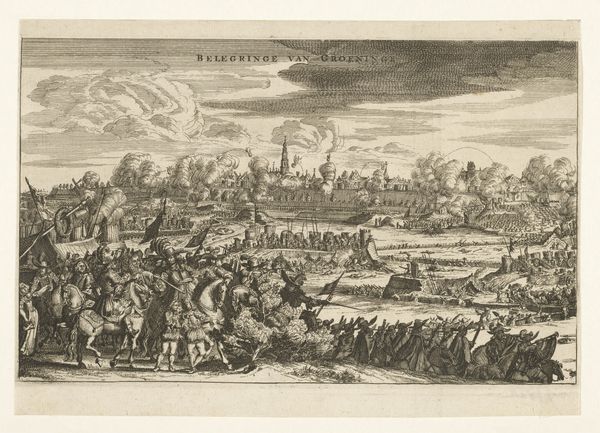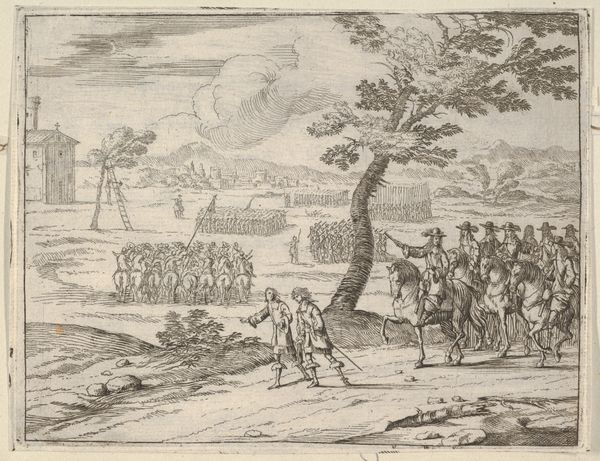![Francesco I d'Este Protects the French in Casalmaggiore from the Seige of the Spanish, from L'Idea di un Principe ed Eroe Cristiano in Francesco I d'Este, di Modena e Reggio Duca VIII [...] by Bartolomeo Fenice (Fénis)](/_next/image?url=https%3A%2F%2Fd2w8kbdekdi1gv.cloudfront.net%2FeyJidWNrZXQiOiAiYXJ0ZXJhLWltYWdlcy1idWNrZXQiLCAia2V5IjogImFydHdvcmtzLzY5N2IyYWI3LTFhNmQtNGI5Ny04N2VhLTk4NTI0YjhmOWJmMS82OTdiMmFiNy0xYTZkLTRiOTctODdlYS05ODUyNGI4ZjliZjFfZnVsbC5qcGciLCAiZWRpdHMiOiB7InJlc2l6ZSI6IHsid2lkdGgiOiAxOTIwLCAiaGVpZ2h0IjogMTkyMCwgImZpdCI6ICJpbnNpZGUifX19&w=3840&q=75)
Francesco I d'Este Protects the French in Casalmaggiore from the Seige of the Spanish, from L'Idea di un Principe ed Eroe Cristiano in Francesco I d'Este, di Modena e Reggio Duca VIII [...] 1659
0:00
0:00
drawing, print, engraving
#
drawing
#
baroque
#
pen drawing
# print
#
landscape
#
figuration
#
soldier
#
horse
#
men
#
history-painting
#
italy
#
engraving
Dimensions: Sheet: 4 13/16 × 6 1/4 in. (12.3 × 15.9 cm)
Copyright: Public Domain
Bartolomeo Fenice created this print, "Francesco I d'Este Protects the French in Casalmaggiore from the Seige of the Spanish," using etching, a printmaking process that democratized image production in its time. The fine, precise lines that define the landscape and figures were achieved by drawing through a waxy ground on a metal plate, which was then exposed to acid. The acid bites into the metal, creating recessed lines that hold ink. The plate is then pressed onto paper, transferring the image. Consider the labor involved in this process. Each impression requires inking the plate, positioning the paper, and applying pressure. Unlike painting, where the artist directly manipulates the medium, etching relies on a series of steps, each requiring skill and attention. The controlled, repeatable nature of printmaking allowed for wider distribution of imagery and information in the 17th century. The choice of etching as a medium speaks to a desire to disseminate the Duke's heroic image widely, embedding political messages within a readily reproducible format. This print exemplifies how artistic techniques intertwine with social and political goals, blurring the lines between art, craft, and propaganda.
Comments
No comments
Be the first to comment and join the conversation on the ultimate creative platform.
